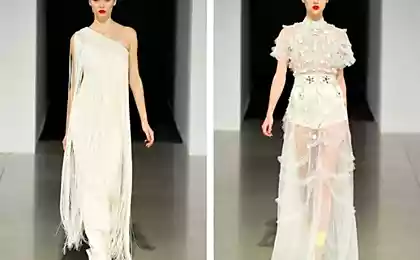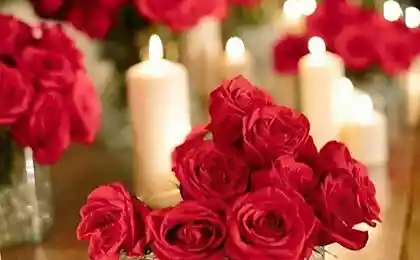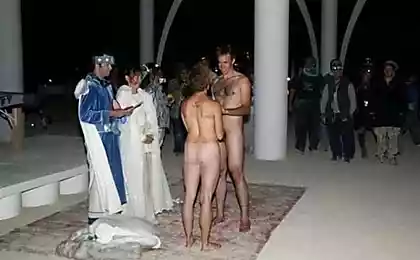266
Wedding ceremonies of ancient Russia, which no longer exist
The history of the Russian people is very interesting and completely forgotten in vain. We invite you to learn about wedding ceremonies and traditions that were held in ancient Russia and were part of the wedding ritual, but today they are successfully forgotten or remade in a new way.
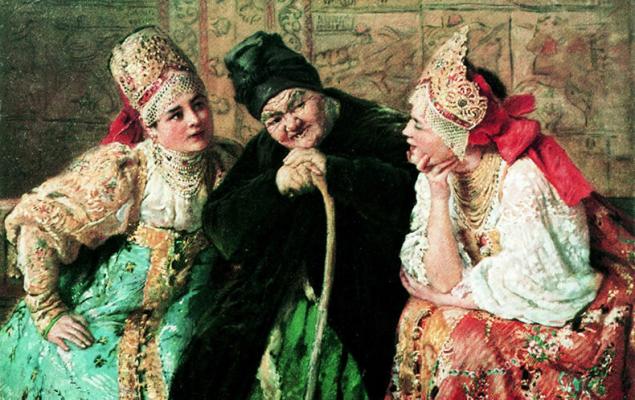
Matchmaking is not only the unexpected arrival of the groom, accompanied by relatives, to the bride’s house to marry in an allegorical form (to show yourself and see the goods). Matchmaking was the starting point from which the rebirth of the main participants of the wedding ceremony, the groom and the bride literally began.
From the moment of the wooing on the bride (agreement) was imposed a restriction in movement, her living space was sharply narrowed to the limits of the parental home. If the girl went out, it was only accompanied by friends and, in fact, only to invite guests to the wedding. The bride was also removed from all household chores, became incapacitated. This was the gradual “dehumanization” necessary for the birth of a new person, already a family.
Watchers

Two or three days after the matchmaking, the groom and his close relatives again come to the bride’s house, now to the screens, during which the girl must show herself in all her glory and demonstrate all her skills and abilities, just as the groom who flaunts in front of all those gathered.
After that, the groom's mother carefully examines and evaluates the bride's dowry. Everything that happens is necessarily accompanied by songs and laments, most often performed by the bride’s friends. However, the girl could refuse to marry without going to the groom.
Handbeat

Shortly before the scheduled wedding day, there was a handshake or a drink, an event that finally fixed the agreement on the wedding. After the ceremony, the rejection of the wedding was impossible. The bride and groom were seated next to the table and glorified in songs that were sung by the bride’s friends.
What do the bride and groom do? The bride does not talk, but laments, and in some houses she is called a wailing woman, who “howls”, that is, performs fasting, and the bride gags and cries. And, despite the visible activity of the groom, his constant movements (he comes to the bride’s house almost every day after the hunch for “visiting”, “kisses”, “shows”), he still remains passive: all matchmakers, relatives, friends speak and do for him.
bachelorette

Has this ritual also disappeared? The fact is that a bachelorette party in Russia is not only a farewell gathering of the bride with friends on the eve of the wedding, but also the manufacture of "beauty" ("will"), braiding, washing the bride in the bath, the destruction or transfer of "beauty" to a friend or groom. Maiden beauty is the last thing that connects the bride with her maidenhood.
It could be a kudel, a tree decorated with ribbons and flaps, a wreath, a scarf. After making the "beauty" it was burned or the bride distributed it to close friends. Whatever the object symbolizing “beauty”, it is invariably connected with the head, or rather hair, and hair is a kind of personification of maiden beauty, will. With the destruction or distribution of “beauty”, the girl allegorically lost her virginity.
Also the bride could cut off the braid and handed it to the groom. And ritual bathing in the bath finally completed the process: the bride became: “neither alive nor dead”, and in this state she was transferred to the groom, arranged a bargain, and the bride and her friends resisted with all their might.
Youth hairstyle

Immediately after the wedding, the bride did the hairstyle of the young woman: they braided two braids and covered the head with a handkerchief or immediately “wound like a grandmother”: the hair braided in two braids was twisted on the back of the head into a bundle, and on top of it they put on the headdress of a married woman (warrior, ochtok, mark). From that moment, only the husband could see the bride’s hair: to appear with his head uncovered to a stranger was tantamount to treason, and to rip off a woman’s headdress was an insult. Changing the hairstyle means the transition of the girl to the power of her husband, and also represents the formation of a new look of a person, his rebirth in a new status. The girl begins to “come to life”: the ability to move independently returns to her, as well as the ability to do everything with her own hands: the bride, entering the house, begins to actively master its space, throws rye, puts a cow, throws a belt, etc.
"Bride Disclosure"
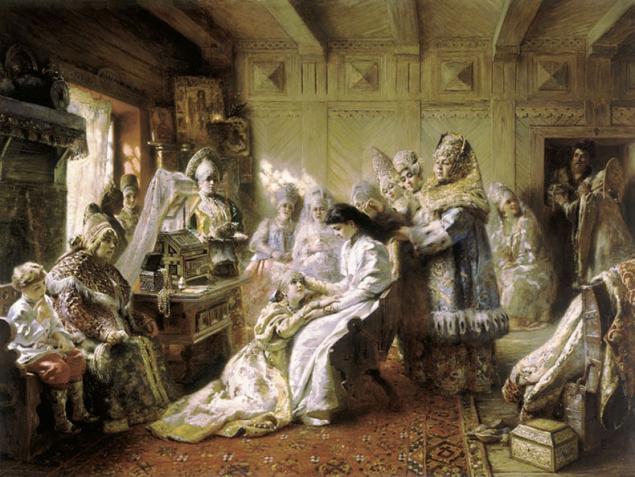
A special ceremony was dedicated to the “opening” of the bride, when the young came from under the crown to the groom’s house. This rite was given a double meaning: for the bride it meant the return of sight; the bride, continuing to come to life, looked at everything with different eyes, and for the groom it was a kind of recognition of the beloved, because she was now different. In some details of the ceremony, an erotic meaning is read when the bride is “opened”: the father-in-law or a friend lifts the hem with a whip, grip, pie or stick. Or on the head of the bride put a cake without filling, symbolizing the child, and wrapped it in a handkerchief, put it in a closet, where the young separately from all ate, and then spent the wedding night. In some areas, it was a custom to make a bed for the newlyweds in a cage or stable, which is associated with the idea of fertility, childbearing.
"Away."

"Attachments" (a joint visit of the bride's young parents) marks the end of the wedding as a special condition for all its participants. This element of the wedding ceremony is especially important for the bride, who comes briefly and as a guest, which emphasizes the irreversibility of all the transformations that occurred to her during the wedding. However, there are other data on the connection of the bride with his house. For example, in the Voronezh province, a young woman during the first year of marriage lived with her mother and was engaged in spinning for her future needs.
Find out why you should not buy yellow bananas
The most charming lazy creatures on Earth
P.S. And remember, just by changing your consciousness – together we change the world!
Source: 4tololo.ru/content/4485

Matchmaking is not only the unexpected arrival of the groom, accompanied by relatives, to the bride’s house to marry in an allegorical form (to show yourself and see the goods). Matchmaking was the starting point from which the rebirth of the main participants of the wedding ceremony, the groom and the bride literally began.
From the moment of the wooing on the bride (agreement) was imposed a restriction in movement, her living space was sharply narrowed to the limits of the parental home. If the girl went out, it was only accompanied by friends and, in fact, only to invite guests to the wedding. The bride was also removed from all household chores, became incapacitated. This was the gradual “dehumanization” necessary for the birth of a new person, already a family.
Watchers

Two or three days after the matchmaking, the groom and his close relatives again come to the bride’s house, now to the screens, during which the girl must show herself in all her glory and demonstrate all her skills and abilities, just as the groom who flaunts in front of all those gathered.
After that, the groom's mother carefully examines and evaluates the bride's dowry. Everything that happens is necessarily accompanied by songs and laments, most often performed by the bride’s friends. However, the girl could refuse to marry without going to the groom.
Handbeat

Shortly before the scheduled wedding day, there was a handshake or a drink, an event that finally fixed the agreement on the wedding. After the ceremony, the rejection of the wedding was impossible. The bride and groom were seated next to the table and glorified in songs that were sung by the bride’s friends.
What do the bride and groom do? The bride does not talk, but laments, and in some houses she is called a wailing woman, who “howls”, that is, performs fasting, and the bride gags and cries. And, despite the visible activity of the groom, his constant movements (he comes to the bride’s house almost every day after the hunch for “visiting”, “kisses”, “shows”), he still remains passive: all matchmakers, relatives, friends speak and do for him.
bachelorette

Has this ritual also disappeared? The fact is that a bachelorette party in Russia is not only a farewell gathering of the bride with friends on the eve of the wedding, but also the manufacture of "beauty" ("will"), braiding, washing the bride in the bath, the destruction or transfer of "beauty" to a friend or groom. Maiden beauty is the last thing that connects the bride with her maidenhood.
It could be a kudel, a tree decorated with ribbons and flaps, a wreath, a scarf. After making the "beauty" it was burned or the bride distributed it to close friends. Whatever the object symbolizing “beauty”, it is invariably connected with the head, or rather hair, and hair is a kind of personification of maiden beauty, will. With the destruction or distribution of “beauty”, the girl allegorically lost her virginity.
Also the bride could cut off the braid and handed it to the groom. And ritual bathing in the bath finally completed the process: the bride became: “neither alive nor dead”, and in this state she was transferred to the groom, arranged a bargain, and the bride and her friends resisted with all their might.
Youth hairstyle

Immediately after the wedding, the bride did the hairstyle of the young woman: they braided two braids and covered the head with a handkerchief or immediately “wound like a grandmother”: the hair braided in two braids was twisted on the back of the head into a bundle, and on top of it they put on the headdress of a married woman (warrior, ochtok, mark). From that moment, only the husband could see the bride’s hair: to appear with his head uncovered to a stranger was tantamount to treason, and to rip off a woman’s headdress was an insult. Changing the hairstyle means the transition of the girl to the power of her husband, and also represents the formation of a new look of a person, his rebirth in a new status. The girl begins to “come to life”: the ability to move independently returns to her, as well as the ability to do everything with her own hands: the bride, entering the house, begins to actively master its space, throws rye, puts a cow, throws a belt, etc.
"Bride Disclosure"

A special ceremony was dedicated to the “opening” of the bride, when the young came from under the crown to the groom’s house. This rite was given a double meaning: for the bride it meant the return of sight; the bride, continuing to come to life, looked at everything with different eyes, and for the groom it was a kind of recognition of the beloved, because she was now different. In some details of the ceremony, an erotic meaning is read when the bride is “opened”: the father-in-law or a friend lifts the hem with a whip, grip, pie or stick. Or on the head of the bride put a cake without filling, symbolizing the child, and wrapped it in a handkerchief, put it in a closet, where the young separately from all ate, and then spent the wedding night. In some areas, it was a custom to make a bed for the newlyweds in a cage or stable, which is associated with the idea of fertility, childbearing.
"Away."

"Attachments" (a joint visit of the bride's young parents) marks the end of the wedding as a special condition for all its participants. This element of the wedding ceremony is especially important for the bride, who comes briefly and as a guest, which emphasizes the irreversibility of all the transformations that occurred to her during the wedding. However, there are other data on the connection of the bride with his house. For example, in the Voronezh province, a young woman during the first year of marriage lived with her mother and was engaged in spinning for her future needs.
Find out why you should not buy yellow bananas
The most charming lazy creatures on Earth
P.S. And remember, just by changing your consciousness – together we change the world!
Source: 4tololo.ru/content/4485








